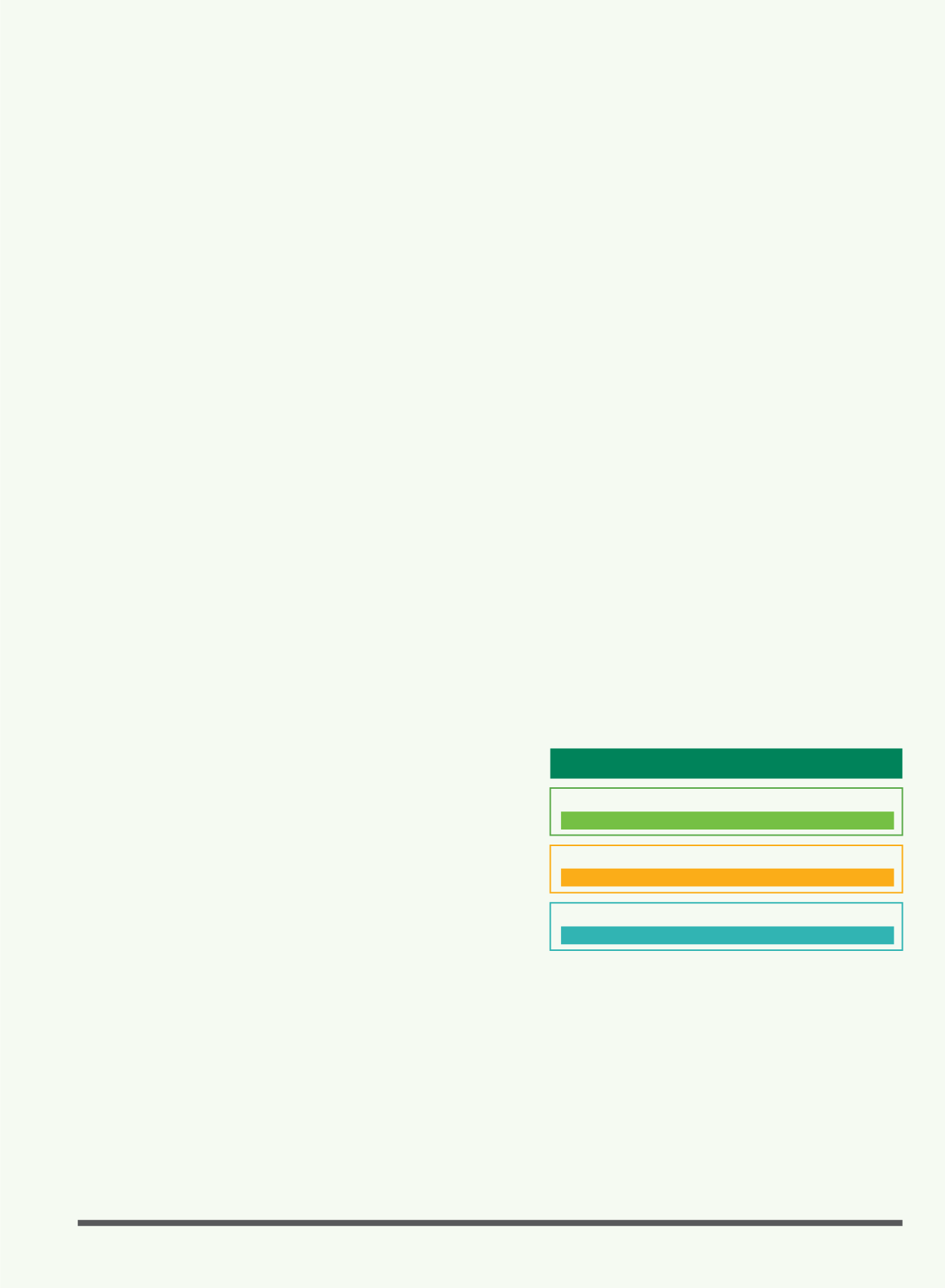

GOVERNANCE
Bursa Malaysia
•
Annual Report 2014
71
STATEMENT ON INTERNAL CONTROL AND RISK MANAGEMENT
d. The Director of Corporate Services, who is also the Chief Financial
Officer (CFO), is required to provide assurance to the AC that
appropriate accounting policies have been adopted and applied
consistently, the going concern basis applied in the Annual Financial
Statements and Condensed Consolidated Financial Statements is
appropriate; and that prudent judgements and reasonable estimates
have been made in accordance with the requirements set out in
the Malaysian Financial Reporting Standards (MFRSs). The CFO also
assures that adequate processes and controls are in place for effective
and efficient financial reporting and disclosures under the MFRSs and
Bursa Malaysia Securities Berhad Main Market Listing Requirements
(MMLR); and that the Annual Financial Statements and quarterly
Condensed Consolidated Financial Statements give a true and fair
view of the financial position of the Group and do not contain material
misstatement.
4. Policies and Procedures
a.
Clear, formalised and documented internal policies, standards
and procedures are in place to ensure compliance with internal
controls and relevant laws and regulations. A list of identified laws
and regulations applicable to Bursa Malaysia is documented and
maintained to facilitate compliance. Regular reviews are performed
to ensure that documentation remains current and relevant. Common
Group policies are available on Bursa Malaysia’s intranet for easy
access by employees.
b. GIA conducts a system readiness review to ensure that due process has
been complied with prior to the implementation or launch of significant
system development and enhancement projects. Post implementation
reviews are also conducted after a predefined period of time to assess
the realised benefit of the implemented systems and projects.
5. Audits
a.
Through its internal audits, GIA assesses compliance with policies
and procedures as well as relevant laws and regulations. In addition,
it examines and evaluates the effectiveness and efficiency of the
Group’s internal control system using the Committee of Sponsoring
Organisations of the Treadway Commission Internal Control - Integrated
Framework as a guide.
GIA assesses the Group’s Internal Control system according to the
following five interrelated control elements:
• Control Environment
• Risk Assessment
• Control Activity
• Information and Communication
• Monitoring
b. Annual on-site regulatory audits are conducted by the SC on the Group’s
operations to ensure compliance with its duties and obligations under
the CMSA, as well as its policies and procedures.
c.
The yearly certification for Information Security Malaysian Standard,
MS ISO/ IEC 27001:2007 Information Security Management Systems
was carried out by CyberSecurity Malaysia.
d. The Auditor Independence Policy requires the lead audit engagement
and concurring partners be subject to a five-year rotation with a five-
year cooling off period. An annual plan, comprising a planned statutory
audit, recurring non-audit services and other anticipated non-audit
services by the External Auditors, requires prior approval by the AC.
The AC’s approval is also required for unplanned non-audit services
obtained from the current External Auditors.
e.
The GIA team is required to conduct an assessment of the internal
control system pertaining to the processes of the relevant business
units/functional groups which have a bearing on the financial
information of Bursa Malaysia, to ensure the reliability and integrity of
such information. The Senior Executive Vice President, GIA who is also
the Head of GIA is required to confirm the effective operation of process
controls which support the preparation of the financial statements.
f.
In addition to the annual audit, the External Auditors are engaged to
conduct limited reviews of the quarterly financial results together with
the cumulative quarters in accordance with International Standard on
Review Engagements 2410 (ISRE 2410), “Review of Interim Financial
Reporting Information Performed by the Independent Auditor of the
Entity” for the first three quarters of the financial year.
6. Risk Management
a.
The Group has in place an Enterprise Risk Management (ERM)
framework for managing risks affecting its business and operations. One
of the key features of our ERM framework is a risk governance structure
comprising three lines of defence with established and clear functional
responsibilities and accountabilities for the management of risk.
ERM FRAMEWORK
First Line of Defence
SENIOR MANAGEMENT TEAM
Second Line of Defence
CORPORATE RISK MANAGEMENT TEAM
Third Line of Defence
GROUP INTERNAL AUDIT
b. Senior Management, which includes Management Committee
members and Divisional Heads, are the first line of defence and are
accountable for all risks assumed under their respective areas of
responsibility in line with the Risk Management Policy and Guidelines.
This group is also responsible for creating a risk-awareness culture,
which will ensure greater understanding of the importance of risk
management and ensure that its principles are embedded in key
operational processes and in all projects.



















